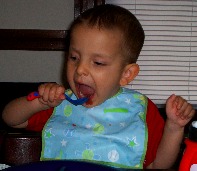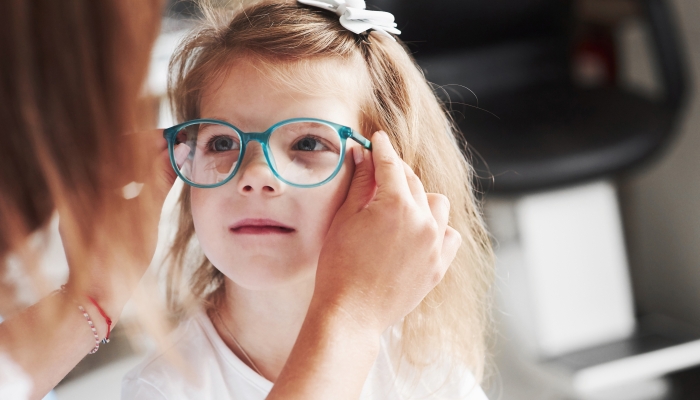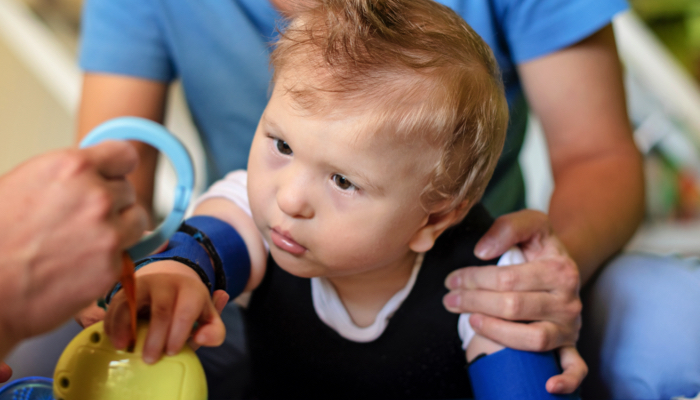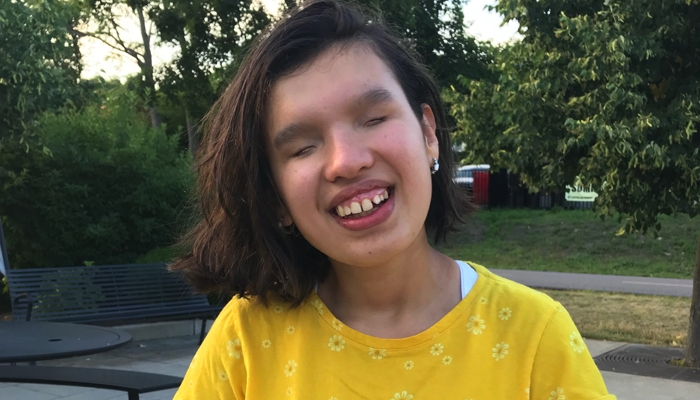Creating Lasting Memories with your Visually Impaired Child

Memories are important to everyone; They help with balance and stability and your sense of self. Children especially love to hear about what they were like when they were babies or things they did when they were little.
These stories help them organize their life experiences and build their concept of a personal identity. They’re also a great way to bond with mommy and daddy.
A simple yet profoundly potent way to establish a life history and vivid memories for your child is to sit down with a photo album and look at pictures.
Think about your own early memories: Do you really remember going on that family vacation when you were three or are you just bringing up memories of the photos your parents showed you? Does it really matter? No, not when you can recall both the images and, by extension, the emotions of the event. Those photos have become a way for your mind to establish a memory and the memory has helped you to shape an idea of what you—and your family—are like.
But what if your child can’t see? How can you create lasting memories for your kids when you won’t be able to share visual snap shots with them? Or, what if you just want to do something more interesting than pictures? We’ve got some great ideas for you…
A Patchwork of Memories
 Keep scraps of old blankets and baby clothes to turn into a memory quilt for your child when they get older. Buy unusually textured clothes for your child whenever you get the chance so that each square will have it’s own unique feel. Think about variety, such as silk, corduroy, or tweed; and think about raised images, like embroidered stitching, sewn-on felt, or even oddly shaped buttons.
Keep scraps of old blankets and baby clothes to turn into a memory quilt for your child when they get older. Buy unusually textured clothes for your child whenever you get the chance so that each square will have it’s own unique feel. Think about variety, such as silk, corduroy, or tweed; and think about raised images, like embroidered stitching, sewn-on felt, or even oddly shaped buttons.
When you have enough scraps, you can piece them together to make a beautiful and memorable quilt. But will the memories make sense? To make sure your child understands each fabric square, keep a journal where you log how old your child was and something fun they did while wearing each piece of clothing. Staple a small sample of the cloth into the journal next to each entry. Imagine how much fun they’ll have as you go through each piece of fabric and feel each square on the quilt while you tell them a happy story from their childhood!
Memory Story Time
When you tuck your little one into bed at night, try starting a new story time tradition. Tell them a simple story about themselves that shows how much they have grown. Choose a few easy-to-remember statements like, “Baby Susan didn’t have any hair; big girl Susie has lots of beautiful curly hair.” Children love hearing about themselves and this story will soon be a big hit.
As soon as your child is old enough, encourage them to join in the evolving bedtime story by elaborating on how they’ve changed. For example, you might say, “Baby Susan couldn’t walk; big girl Susie can…” and let them fill in the blank with whatever comes to their mind, “big girl Susie can walk and run and dance and walk on the garden wall!”
Record these little night time story compositions and soon you’ll have your own library of memories to share with your child when they’re grown up!
Cooking Up Memories
 Have you ever noticed how a certain smell will instantly remind you of something? That’s because the olfactory center of the brain is very closely related to the part of the brain that stores our memories. And what better place to get some nice smells going than in the kitchen?
Have you ever noticed how a certain smell will instantly remind you of something? That’s because the olfactory center of the brain is very closely related to the part of the brain that stores our memories. And what better place to get some nice smells going than in the kitchen?
The kitchen is a great learning area. You can teach your child math (by measuring out 1/4 of a cup of sugar) and a myriad of daily living skills (from hand washing to making meals). It’s also a wonderful place to teach your child all of your special recipes that your mom passed on to you when you were young.
Cook with your child, eat your tasty creations, and keep a box or small binder with all of your recipes written on index cards (try writing them in braille if you know your child will grow up to be a braille reader). You can share these recipes with your child when they are all grown up. Then one day they can bake a batch of cookies for you and say, “Hey, remember when we used to make these cookies when I was a kid?”
Be creative in thinking beyond vision and photographs when creating memories for your child. Think about their other senses (such as smell or touch) and other ways to remember things (like with recorded voices or textured clothes).
Another simple way to collect memory keepsakes is to keep an old box or trunk full of fun little things from your child’s life, like their first pair of shorts or their first hat (so they can see how small they were when they were a baby) or even their favorite toys or CDs.
Whatever you do, remember that you are helping your child learn about who they were when they were little and that this will help them develop who they will become when they are all big and grown up.
Related Posts

Eye Conditions and Syndromes, Support, Visual Impairment
Coping with a Diagnosis: Emotional Support for Families with Visually Impaired Children
Families with emotional support are more resilient. Learn how to establish emotional support with peers, professionals, and the community to help your family thrive.

Special Needs, Visual Impairment
Why Early Intervention Is Critical for Blind Children
Children diagnosed with visual processing disorders, low vision, or blindness need specialized treatment. Early intervention programs can help.

Eye Conditions and Syndromes, Visual Impairment
Anophthalmia: Navigating the Path from Diagnosis to Adaptation for Parents and Their Children
Anophthalmia is a rare disorder that results in childhood blindness. Early intervention services are important to help your baby maximize their potential.